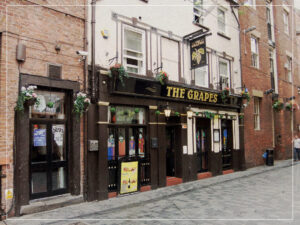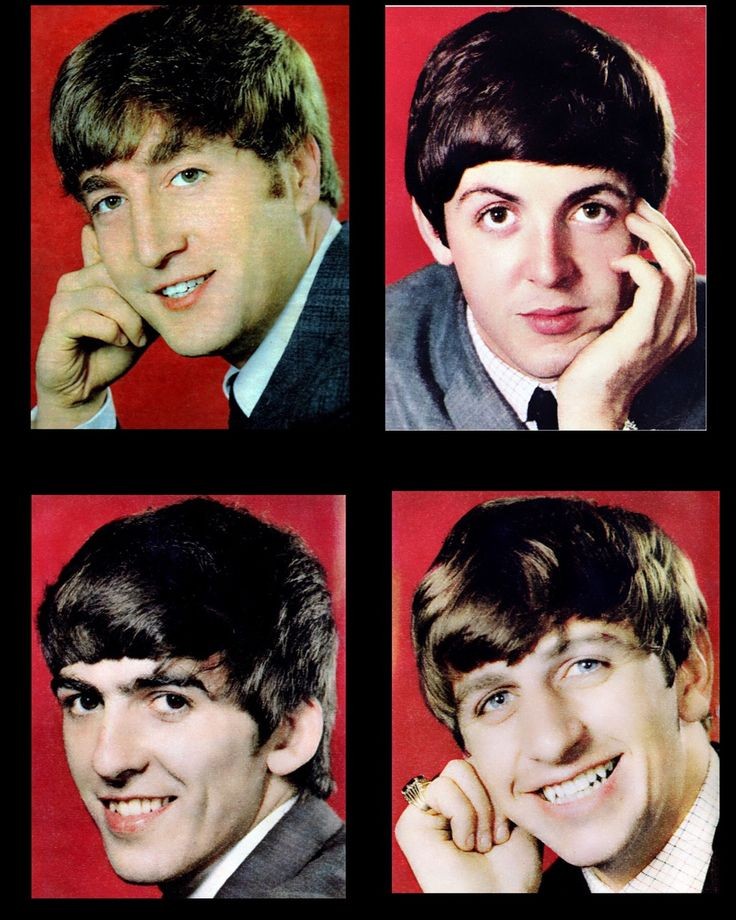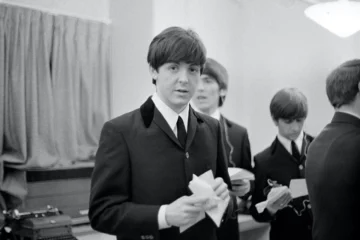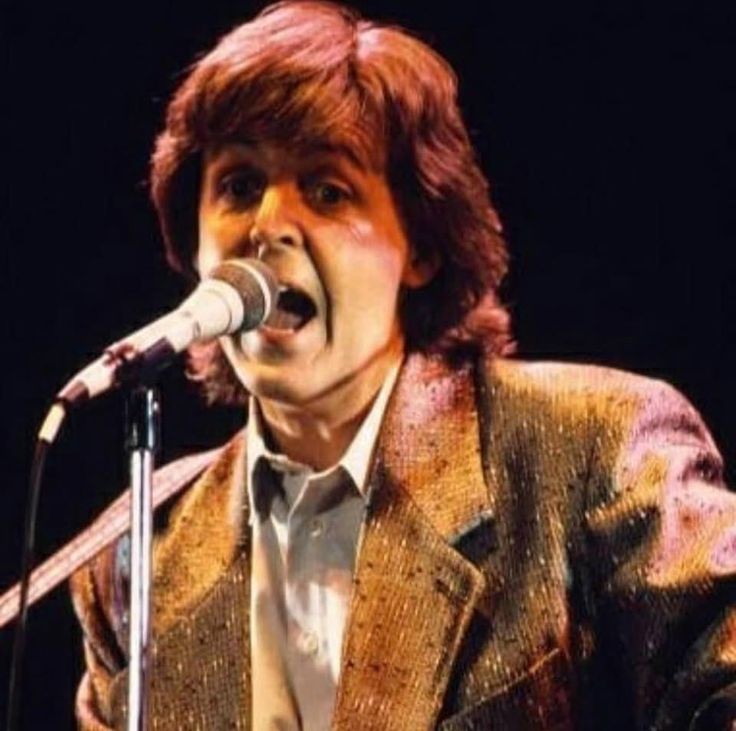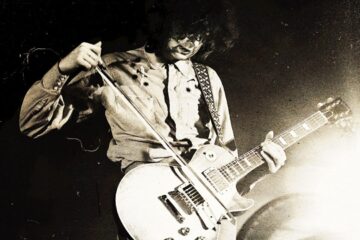The Beatles are undoubtedly Liverpool’s most famous and beloved sons. From their humble beginnings as a skiffle band, playing the various small stages of the city’s pubs and venues, the Fab Four became one of, if not the most, famous bands in history. But back in their hometown, the memory of their earliest days is still alive.
For Liverpool residents, The Beatles feel like a neighbour. They’re legends to walk alongside, held tight in the city’s collective heart. Scousers are a proud lot who place heavy importance on their heritage and take great pride in their own achievements. As the local lads became globally and timelessly renowned stars, the northwestern city celebrated them as its finest export.
For fans outside of the area, a trip to the city has become a kind of pilgrimage. Hordes of people flock to the town each year, all to see the sights and walk the streets that the band graced. Every step of their journey to the top has become a well-pounded path. From their childhood homes to the first venues they played, the cobblestones they touched seem to be paved with gold in the minds of their enduring listeners.
But really, to discover The Beatles’ Liverpool, you need comfy shoes and some cash for the bus. As locals born and raised there, their home isn’t a neat little city centre jaunt. Instead, chasing after their slice of life takes fans from the famous docks way back into the suburbs. But along the way, pilgrims get to see the settings of some of their most famous songs as the Fab Four immortalised the landscapes in which they grew up.
Step inside The Beatles’ Liverpool…

St Peter’s Church & Hall, Woolton
Let’s begin where it all started. On July 6th, 1957, Paul McCartney was at a summer fête, watching a skiffle band on stage. They were called The Quarrymen, and their leader was a 16-year-old lad called John Lennon.
After their performance, Lennon and McCartney were introduced by Ivan Vaughan, the group’s bassist, in the church hall. As the band set up for their evening performance, McCartney auditioned with ‘Twenty Flight Rock’, impressing the rest with his ability to play left-handed. The rest was history; he joined the group, and the iconic songwriting duo united.
George Harrison’s childhood home – 12 Arnold Grove
The next piece of the puzzle was George Harrison. Born and raised in the suburb of Wavertree, Harrison attended Liverpool Institute High School for Boys along with McCartney. Impressed by his friend’s guitar skills, McCartney introduced Harrison to the rest of The Quarrymen, leading to his joining the lineup.
Harrison’s childhood home at 12 Arnold Grove is now marked with a blue plaque. As the sign was unveiled, the Mayor said the guitarist “will always be regarded as one of Liverpool’s greatest sons”, gracing his home as a key cultural spot. He lived there for the first years of his life before the family moved to 25 Upton Green in Speke. But even after the move, the quiet Beatle always lived only a short bus ride away from the rest of him.
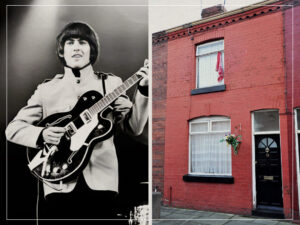
John Lennon’s childhood home – Mendips, 251 Menlove Avenue
Paul McCartney remembers Mendips as “one of the almost posh houses” in the Woolton area of Liverpool. After being taken away from his parents, Lennon was raised by his well-to-do Aunt Mimi.
The house is steeped in history. Fans can go inside and see the spots where Lennon and McCartney first began their collaborative relationship as part of the band’s musical legacy. But on a personal level, the home was a difficult place for Lennon. Just outside the house, his mother was hit by a car and killed in an accident that deeply affected the musician. It would take a while for the incident to find its way into his lyrics, but the house still holds the story of his troubled youth.

Strawberry Fields
From Lennon’s home, you merely have to look outside to see one of the most favourite Beatles locations, Strawberry Fields. It’s the name of the Salvation Army nursery just by the house where the musician and his earliest friends would play in the garden. His Aunt Mimi recalled, “There was something about the place that always fascinated John. He could see it from his window… He used to hear the Salvation Army band [playing at the garden party], and he would pull me along, saying, ‘Hurry up, Mimi – we’re going to be late.’”
In the song ‘Strawberry Fields Forever’, the location represents Lennon’s nostalgia for the Liverpool of his youth and the simplicity of childhood. Now, Strawberry Fields is always busy with visitors. The sign marking the location is full of signatures from fans or messages to the singer.
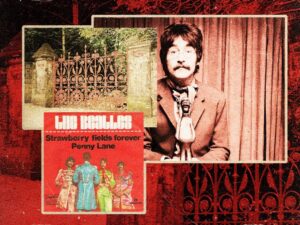
Penny Lane
Another of the most famous Beatles locations is Penny Lane, a street in the suburb of Mossley Hill. But for a largely nondescript road, the place was a huge pinpoint on the map of the band. In the original lyrics for the song, Lennon wrote, “Past the tram sheds with no trams / On the five bus into town.” The number five bus was the route that took the two songwriters between one another’s houses, and in between the two points sat Penny Lane.
“Penny Lane was the depot I had to change buses at to get from my house to John’s,” McCartney remembered. So they spent a lot of time on the street, waiting for the next bus as they were on their way to write some of their earliest hits.
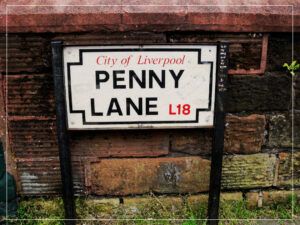
Paul McCartney’s childhood home – 20 Forthlin Road
While John Lennon’s home was posher, he more often than not decamped to McCartney’s. Even though Aunt Mimi was supportive of his endeavours, the noise wasn’t appreciated. So mostly, the two friends would sit at 20 Forthlin Road to write songs like ‘I Saw Her Standing There’.
The National Trust labelled this house “the birthplace of The Beatles” as it’s where the duo wrote their first tracks and really began rehearsing and playing the sound that the world would come to know. Fans can step inside, treating the place as holy ground.
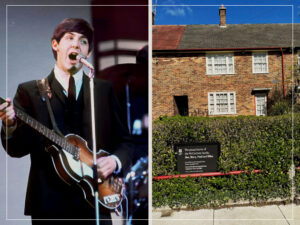
Ringo Starr’s childhood home – 10 Admiral Grove
Perfectly in keeping with how the lineup came about, Ringo Starr’s childhood home is the last one on the road to Liverpool. As if the band collected him along the way as they headed towards their future, Starr grew up in Toxteth, a suburb a little further away from the rest of the Fab Four.
But it was here that Starr first started playing the drums, as he was kept off school to recover from a serious illness as a child. He also lived there until 1963, only moving out when The Beatles hit the big time, and the craze of Beatlemania forced him to a lesser-known but more luxurious spot.
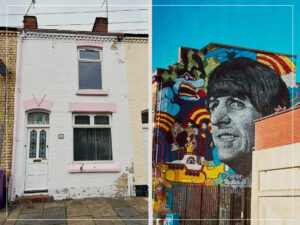
The Cavern Club
First, it was a jazz club, then a hotspot for Liverpool’s blooming rock and roll scene, and then, after a fateful gig on February 9th, 1961, it was The Beatles’ club. That’s how the Cavern Club is best known today. Even though the original building is gone, the replacement still seems to buzz with history as bands still take to the stage and see it as an honour to walk in their memory.
For The Beatles, it was a regular haunt. Between 1961 and 1963, the group played there 292 times. On November 9th, 1961, a man called Brian Epstein happened to be in the crowd and made moves to become the band’s manager immediately after their set. Their last show was on August 3rd, 1963, only a few months after the release of ‘She Loves You’, and just before the US tour would make them the biggest band on earth. For fans on a pilgrimage to the city, head to the club for a show, just in case you spot the next big thing.
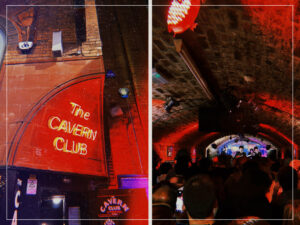
The Grapes
Once all that sightseeing is done, head for a drink. On Matthew Street, the same street as the Cavern Club sits one of the few remaining watering holes that the band would frequent. The Grapes is just a humble pub, but it was one of their favourites. Apparently, the group would sit on the right-hand side of the bar, by the ladies’ toilets, where the girls would sort their hair and makeup before heading to the Club.
It’s also famously where Pete Best, the group’s original drummer, went to drown his sorrows after being booted from the band in 1962. Apparently, George Harrison even ended up with a black eye after a bust-up outside the pub after he was axed. Today, the establishment is loved for its history and its karaoke, where Beatles fans can sing their heart out to all their favourite hits every night or put them on through their original vinyl jukebox.
